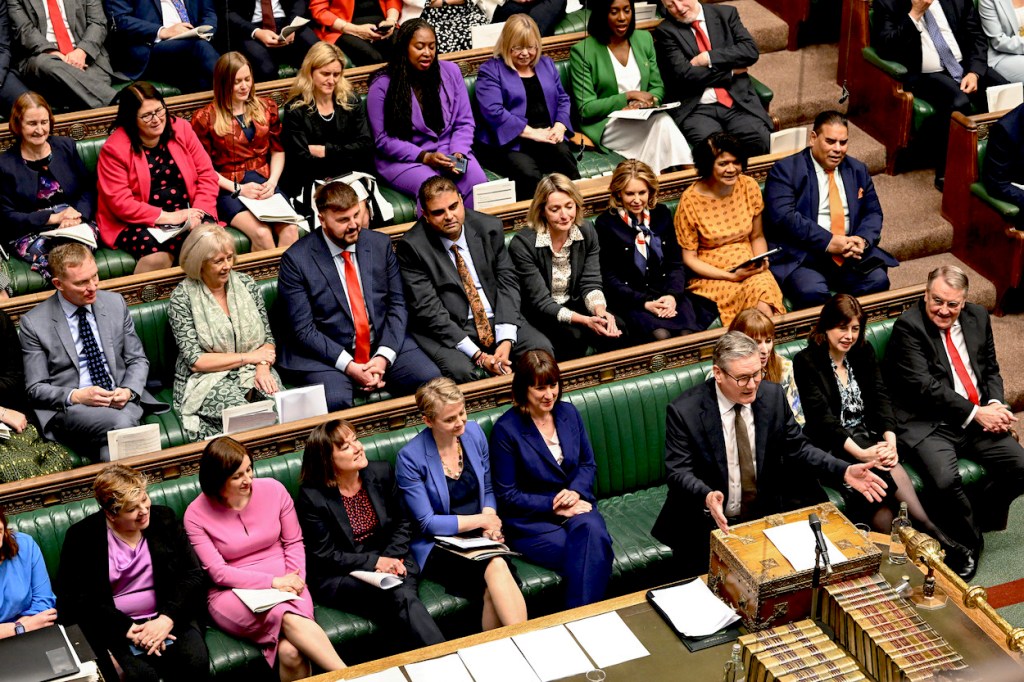The Labour party is in a bind over cars. Its instincts – collectivist, green, managerialist – strongly favour anti-car measures like low traffic neighbourhoods (LTNs) with roads strategically blocked off, and 20 mph speed limits. Unfortunately motorists overwhelmingly disagree.
In Wales, the new government under Eluned Morgan has learnt this to its cost. Faced with something like a 70 per cent disapproval rate of the national default 20 mph limit in urban areas, it has now been humiliatingly forced to roll it back.
It’s working people who will bear the brunt of these anti-car measures
In England, Transport Minister Louise Haigh has sought to play a more subtle game. She has, it is true, distanced herself from the previous government’s policy of discouraging LTNs and 20 mph limits by withholding ministerial approval and central funding: on the contrary, she has said she approves of them, and will back local authorities who want to introduce them. But in a nod to localism, and also to drivers, she has also rejected the idea of top-down dictates from Whitehall. The decision, she says, must ultimately be that of local authorities.
Haigh knows that transport is one of the few areas where Labour remains electorally vulnerable to the Tories and Reform. Will this fence-sitting operation work? It might, but the odds are against it. Looked at closely, there is not much in it for those she has to convince.
For one thing, Haigh’s proposal is not as democratic as it looks. The Tories’ withdrawal of government monies for traffic limitation schemes at least had the advantage of being principled. It made it clear to councils contemplating them, and electors thinking of voting for them, that it was they who would have to find the funds to pay for them. Haigh, by contrast, seems to have dropped this combination of power with financial responsibility by saying the taxpayer will contribute. Assuming this has been approved by Rachel Reeves despite her protestations that the government is broke, what we are now talking about is a policy not only of encouraging anti-car measures, but of paying councils to implement them.
Secondly, passing on the decision over such schemes to local councils may well in practice not give much of a say to those likely to be affected. Most councils cover a fairly substantial area. Individual schemes for LTNs or low speed limits involving a few roads affect a fairly small number of electors: local business owners, the residents of the streets affected and of streets onto which traffic will be diverted. Unless every scheme is preceded by a consultation at a very granular, possibly ward, level, neither those who will feel the effects of such schemes nor their elected councillors will have all that much influence over the result.
Indeed, one wonders how far in practice individual councillors will become meaningfully involved at all. In large councils with cabinet arrangements and a great deal of business to conduct in full meeting, it’s quite likely that those involved in drawing up schemes will be not so much councillors as the council’s highways bureaucracy. Although in theory all councillors can make an input, in practice one suspects that many plans, especially those likely to be supported in Whitehall, will go through on the nod. All they will need is the formal votes of those whose wards are nowhere near the area to support a cut-and-dried scheme that appears fairly low down a substantial agenda paper.
We also have to remember that while 20 mph limits do affect the bourgeois classes (many readers will have friends worried about retaining their licences after being repeatedly caught on camera driving at a furious 26 mph down an empty street at night), it’s working people who will bear the brunt of these anti-car measures. The just-about-managing don’t have the luxury of ordering online from M&S or Ocado or virtuously cycling to a well-appointed office equipped with showers. They value the ability to take the van quickly round to work, and at the end of the day, if they have a moment to spare, to take the car to Tesco to do the weekly shop. Working people like this are also the ones more likely to live on or near the streets that will become the new rat runs, while the new measures will make life quieter for the more select side streets where the better-off live. How far they will appreciate this sacrifice to their quality of life remains to be seen.
Labour bigwigs, one suspects, have nostalgic memories of grimy working-class children gambolling happily on car-free streets over long summer evenings. These days, however, the gambollers are more likely to be Gemma and Amelia, dressed carefully from John Lewis, watched carefully by a well-turned-out mother and told not to play beyond the leafy planters at the end of the street. For that matter, many Labour councillors are also probably happier in such circles, since Labour long ago ceased to be the party of the working class. By contrast, the people they supposedly represent, asked to sacrifice their own convenience and lifestyle, may well look at things in a less rose-tinted way. Louise, you have ben warned.







Comments